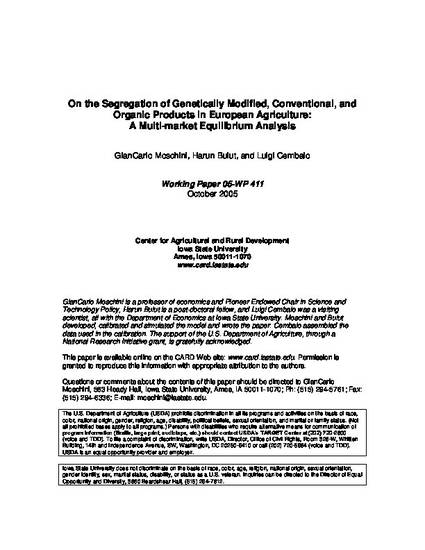
Article
On the Segregation of Genetically Modified, Conventional, and Organic Products in European Agriculture: A Multi-market Equilibrium Analysis
CARD Working Papers
Publication Date
10-1-2005
Series Number
05-WP 411
Abstract
Evaluating the possible benefits of the introduction of genetically modified (GM) crops must address the issue of consumer resistance as well as the complex regulation thathasensued.IntheEuropeanUnion(EU)thisregulationenvisionsthe“co-existence” of GM food with conventional and quality-enhanced products, mandates the labelling and traceability of GM products, and allows only a stringent adventitious presence of GM content in other products. All these elements are brought together within a partial equilibrium model of the EU agricultural food sector. The model comprises conventional, GM and organic food. Demand is modelled in a novel fashion, whereby organic and conventional products are treated as horizontally differentiated but GM products are vertically differentiated (weakly inferior) relative to conventional ones. Supply accounts explicitly for the land constraint at the sector level and for the need for additional resources to produce organic food. Model calibration and simulation allow insights into the qualitative and quantitative effects of the large-scale introduction of GM products in the EU market. We find that the introduction of GM food reduces overall EU welfare, mostly because of the associated need for costly segregation of non-GM products, but the producers of quality-enhanced products actually benefit.
Disciplines
Citation Information
GianCarlo Moschini, Harun Bulut and Luigi Cembalo. "On the Segregation of Genetically Modified, Conventional, and Organic Products in European Agriculture: A Multi-market Equilibrium Analysis" (2005) Available at: http://works.bepress.com/giancarlo-moschini/29/
